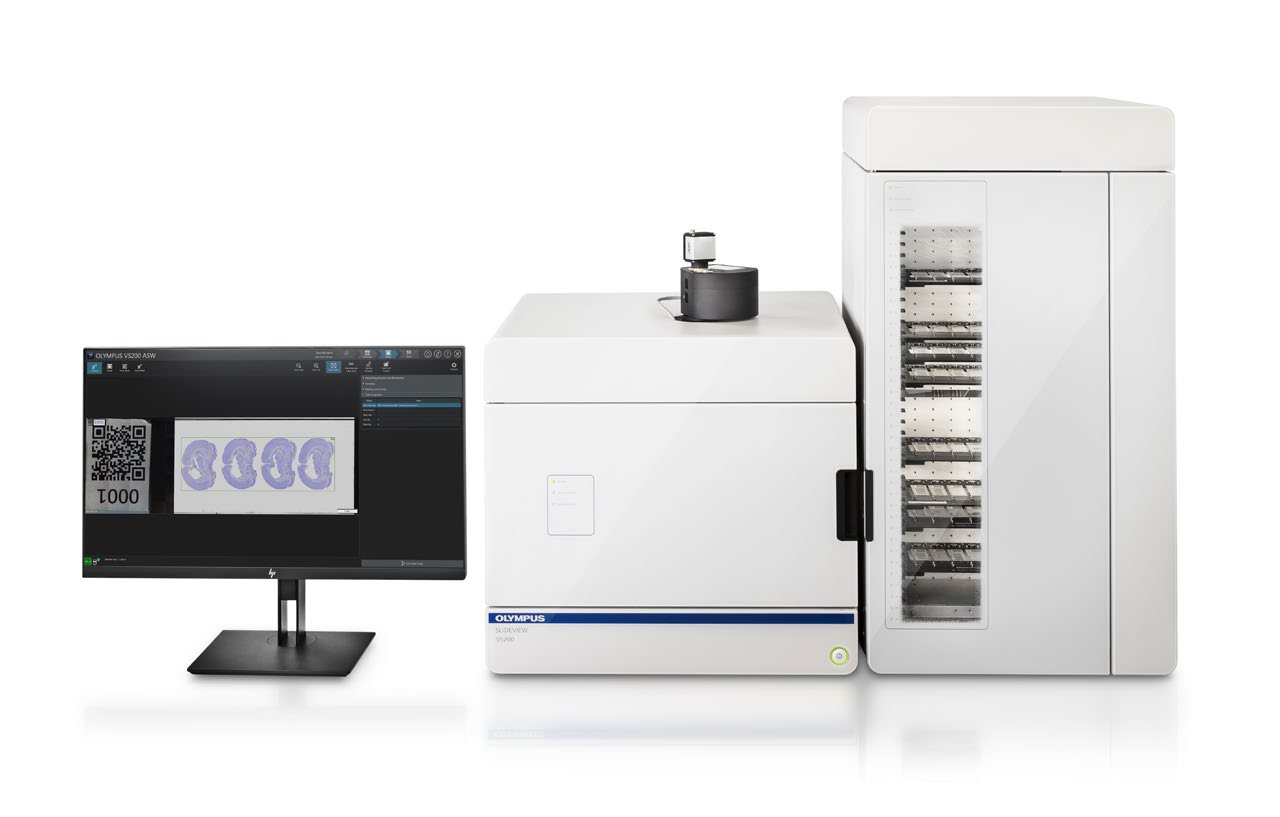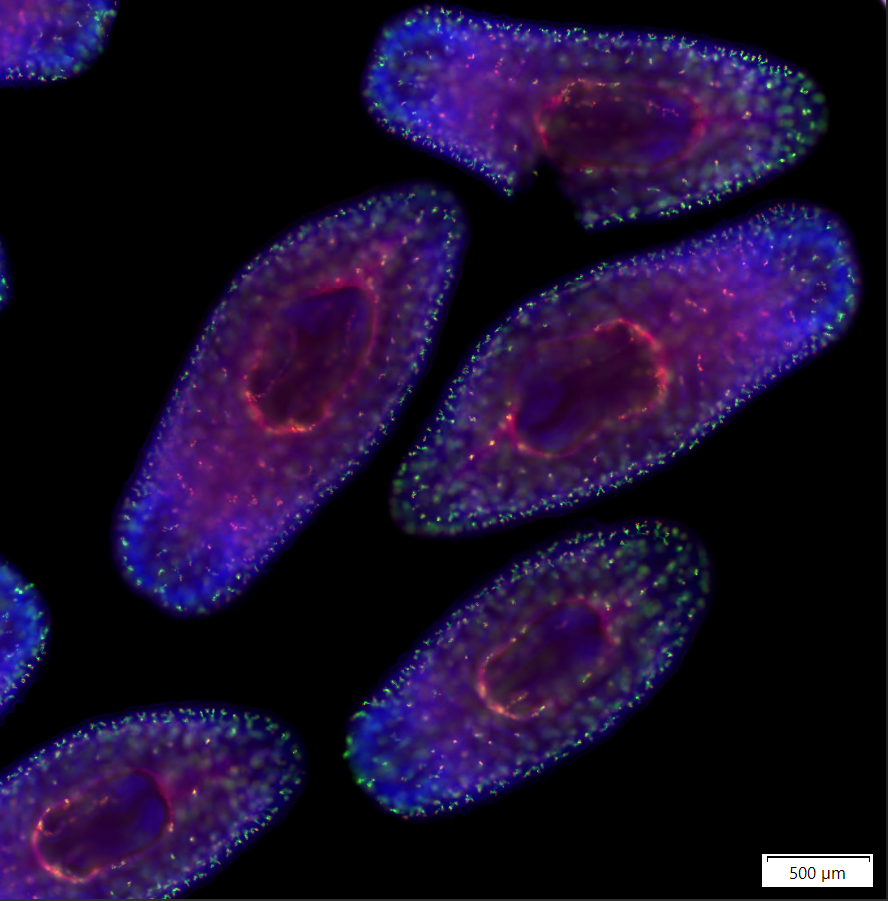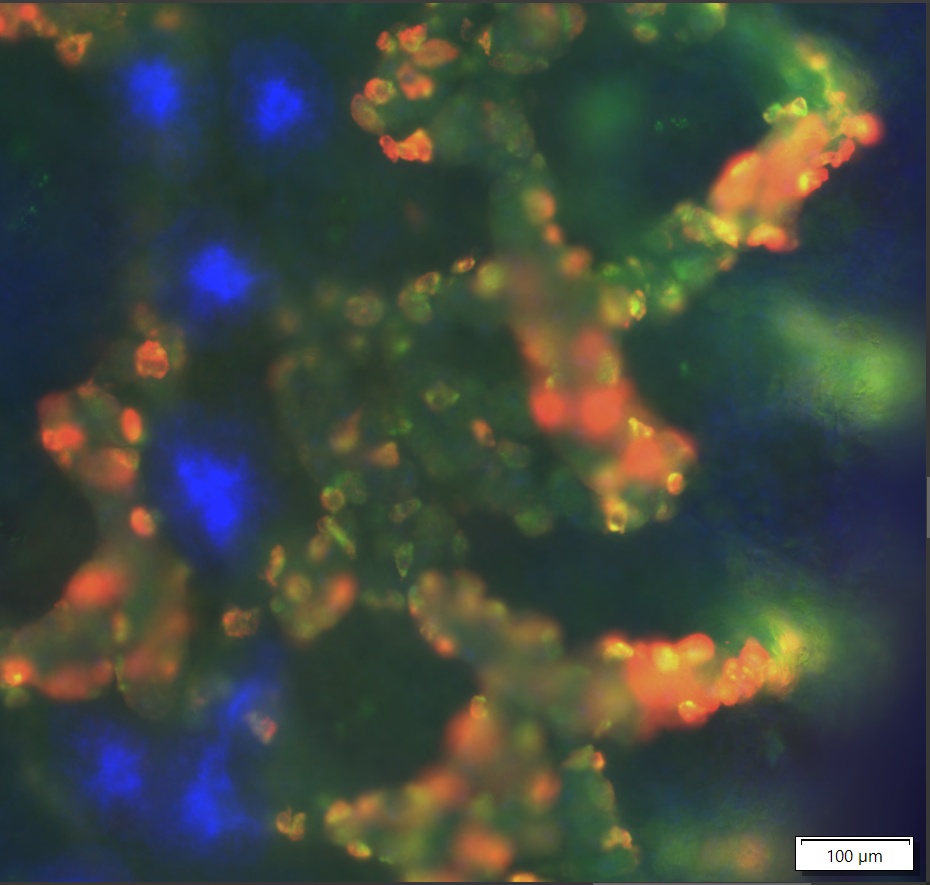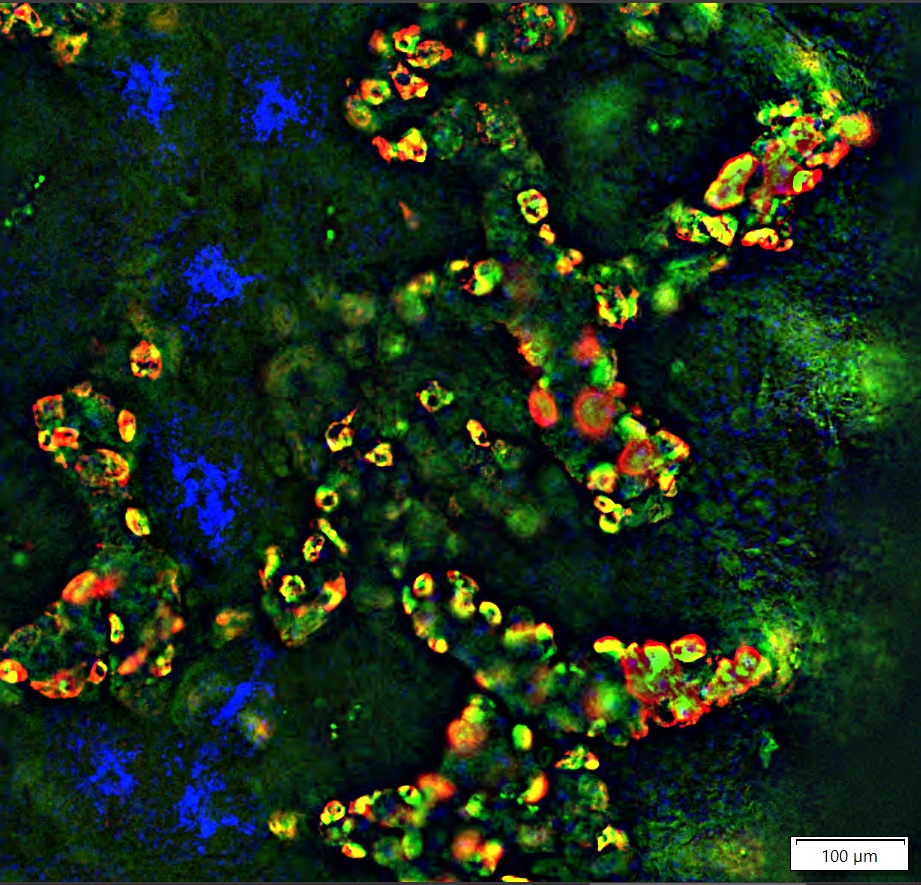Digitizing Very Thick Fluorescent Samples with the SLIDEVIEW VS200 Research Slide Scanner

Introduction
At the Max Planck Institute of Molecular Cell Biology and Genetics (MPI-CBG) in Dresden, Germany, researchers are investigating the regeneration capabilities of the planarian flatworm Schmidtea mediterranea using the Olympus SLIDEVIEW VS200 research slide scanner. S. mediterranea is a popular model for studying the biology of system regeneration.
Advantages of using S. mediterranea include:
- The low cost to keep and maintain a sufficient number of animals in the lab
- A recently sequenced genome
- Established tools and methods for loss-of-gene-function studies via RNA interference (RNAi)
Understanding the Regeneration Capabilities of Schmidtea Mediterranea
Researchers at the MPI-CBG are using the extraordinary qualities of Schmidtea mediterranea. Even when cut into tiny pieces, each piece can regenerate back into a complete and perfectly proportioned miniature planarian. Adult stem cells play an important role in this process, as a single one can restore a complete worm.
Many researchers today are looking to more clearly understand how S. mediterranea regenerate. An important step toward this goal was the first highly contiguous genome assembly of S. mediterranea, which was reported by researchers at the MPI-CBG in cooperation with the Heidelberg Institute for Theoretical Studies (HITS) in a Nature article.*
The assembly reveals a genome that contains novel giant repeat elements and new flatworm-specific genes. However, it lacks other genes that were thought to be absolutely essential for keeping an animal alive. This discovery has potential implications in the fields of regeneration research, stem cell biology, and bioinformatics.
Capturing High-Resolution Fluorescence Images of Schmidtea Mediterranea
For their studies, the researchers at the MPI-CBG use the powerful capabilities of slide scanning systems. They use the VS200 slide scanner to acquire high-resolution fluorescence images.
“The Olympus VS200 scanner not only allows us to easily acquire high-resolution images but also provides TruSight Live, a real-time deblurring function,” explained Dr. Tobias Boothe from MPI-CBG.
The prepared specimens are quite thick as they are not cut before being immobilized on a slide. With this 200–300 μm thick specimen, the system’s TruSight Live or Z-stack functionalities are essential.
The TruSight Live option enables researchers to reduce distracting diffused light from the areas above and below the focus plane. The image data will then be calculated again with a special 2D deconvolution algorithm. This makes the images sharper and clearer.
For their research, the S. mediterranea was immobilized on a slide, stained with double fluorescent (red and green) in situ hybridization of two yolk gland markers in sexually mature individuals, and scanned at 10× magnification on a VS200 slide scanning system. The nuclear counterstain with DAPI was also acquired. The two markers were ferritin and surfactant b, which both label yolk in planarians.
The left image below shows a scan where no online deblur was applied. In the right image, TruSight Live was applied to all three channels (DAPI, FITC, and CY3) during the scan.
“The images and data we are now acquiring are an essential source for our ongoing investigation in understanding the relation between the abundance of reproductive tissue in adult planarians and the ability to regenerate the animal. For that, I need multiple markers, like the genes surfactant B and the ferritin, as shown in the picture,” said Dr. Miquel Vila-Farré from MPI-CBG.
As an alternative to TruSight Live, you can also acquire a virtual Z-stack containing a maximum of 31 planes, as shown in the images below.
After image acquisition, you can seamlessly focus through the Z-stack to see the signal distribution through the sample thickness.
In the following imaging example, you see a double fluorescent in situ hybridization of two excretory system markers in the planarian Schmidtea mediterranea, Smed-cubilin-1 (FITC, green), and a novel gene (dd_2920, CY3 red). DAPI (blue) was used for nuclear staining. “To compare the structural organization of the planarian excretory system to that of the vertebrate nephron, we used Smed-cubilin-1 and dd_2920 as markers to visualize two different cell types of the planarian excretory system, proximal tubular cell, and filtration cell, respectively,” said Dr. Hanh Vu from MPI-CBG. |  Double fluorescent (red and green) in situ hybridization of two excretory system markers in the planarian S. mediterranea. |
Conclusion
The Olympus VS200 research slide scanner captures high-resolution fluorescence images of very thick samples, such as Schmidtea Mediterranea. Its TruSight Live and Z-stack functionality are essential capabilities that help researchers observe and analyze the fine details in these thick samples.
Acknowledgements
This application note was prepared with the help of researchers from the Max Planck Institute of Molecular Cell Biology and Genetics, Dresden, Sachsen, Germany and Dr. Daniel Göttel, Application Specialist, Olympus Soft Imaging Solutions in Münster, Germany:
- Dr. Tobias Boothe, Postdoc at the Max Planck Institute of Molecular Cell Biology and Genetics, Dresden, Sachsen, Germany
- Dr. Miquel Vila-Farré, Postdoctoral Researcher at the Max Planck Institute of Molecular Cell Biology and Genetics, Dresden, Sachsen, Germany
- Dr. Hanh Vu, Postdoctoral Researcher at the Max Planck Institute of Molecular Cell Biology and Genetics, Dresden, Sachsen, Germany
- Dr. Daniel Göttel, Application Specialist, Olympus Soft Imaging Solutions GmbH, Münster, Germany
References
*Nature; 24 January, 2018 (DOI: 10.1038/nature25473).
Products Related to This Application
was successfully added to your bookmarks
Maximum Compare Limit of 5 Items
Please adjust your selection to be no more than 5 items to compare at once
Not Available in Your Country
Sorry, this page is not
available in your country.



